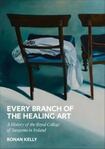
That Dublin’s Guild of Barber-Surgeons was established in 1446 makes it the oldest royally decreed professional body for surgery in these islands. But union with the overwhelmingly numerically superior barbers made setting standards very difficult, so the medics broke with the barbers in 1784, establishing the Royal College of Surgeons in Ireland (RCSI). “Surgeons” in the title was very much part of a wider effort to professionalise surgical practice.
Originally sited in the Rotunda Hospital, the RCSI then rented rooms until settling in Mercer Street in 1789, where its long – and continuing – teaching era began. The Anglo-French wars benefited the college and Abraham Colles, himself educated there, became “the single most influential figure in RCSI’s early history”. As professor of anatomy and physiology (1804-1827) and of surgery (1804-1836), Colles was an excellent teacher, writer and illustrator who attracted large numbers of students, so successful was he in making surgery a respectable profession here.
If the half-century after the Act of Union is often seen as a period of decline, it was “a golden age in Irish medicine”. In 1805, the RCSI bought the plot of land on St Stephen’s Green where it now stands, and the neoclassical building was opened in 1810 (the current board room is largely unchanged since then). It was expanded in the 1820s with the creation of the still-existing Palladian facade.
[ The first thing I notice is the strong smell. ‘That’s the mortuary’Opens in new window ]
[ Chronicle of Royal College of Surgeons in Ireland launched by Dr Mary McAleeseOpens in new window ]
Ronan Kelly’s coverage of how bodies were sourced for dissection is gruesomely fascinating, and the stories of the college’s museum and library are well-told. It’s remarkable how many of Dublin’s most important hospitals owe their existence to RCSI personnel initiatives.
READ MORE
Post-1844 administrative and professional innovations are detailed. Notables of this period were Francis Rynd (inventor of the forerunner of the hypodermic syringe), Arthur Leared (inventor of the binaural stethoscope), Henry Maunsell (advocate and promoter of what became known as public health medicine), Robert McDonnell (performed Ireland’s first human-to-human blood transfusion), and Charles Cameron (from the 1860s, “he did more than anyone else to improve public health” in Dublin).
Among other aspects covered are the RCSI’s pioneering women; its close association with many major events in Irish history; its difficult period (1920-1950) and “renaissance” (1960-1980); and its “internationalisation” and close links with Kuwait, Saudi Arabia and Bahrain. This is a lively, well-written, thoroughly researched account of an important Irish institution.












